It was a dramatic scene overnight on June 14 when, under balloon lights, the between Windsor, Ont. and Detroit, Mich. was set in place.
Ironworkers and operating engineers from both the Canadian and U.S. sides, with their countriesтАЩ flags hovering from crane cables above, worked until dawn to install the final piece that officially created the third international crossing between the two cities, after the Ambassador Bridge and WindsorтАУDetroit Tunnel, both almost 100 years old.
Weather conditions were monitored and installation of the mid-span closure was left until night when temperatures were cooler reducing the risk of steel expansion.
тАЬIn the end, our planning and measurements monitoring worked. The edge girders fit perfectly into place,тАЭ said Jaime Castro-Maier, B consortium lead Canadian engineer.
This followed installation a few days earlier of six temporary bracing pieces (closure beams, wind struts, and transverse cranks) to keep the deck aligned. Bridge construction began in December 2022 and consisted of 54 segments, 27 built out from towers on both the U.S. and Canadian sides.
▓╧│▄▒Ё▓·▒Ё│жтАЩs manufactured the custom-made components for the final segment тАФ two edge girders, nine redundancy girders, two floor beams, 12 precast panels and 12 soffit panels. Unlike the other segments the closure didnтАЩt require stay cables.
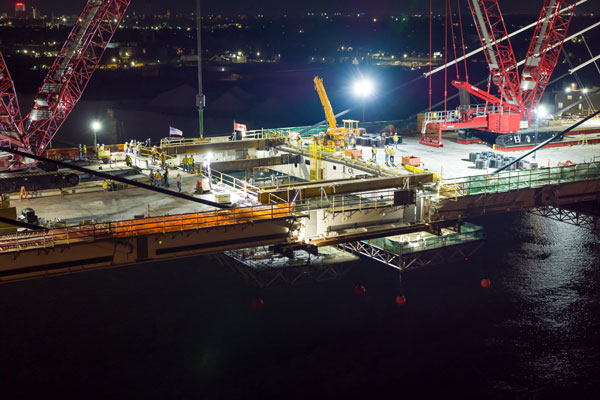
The $5.7-billion bridge otherwise has 216 cables and is the longest cable stayed bridge in North America with the main span between towers measuring 853 metres.
After the temporary mid-span segment bracing the approximately 11-metre gap was measured again to ensure an exact fit, two edge girders were installed, the first bolted to the U.S. side. Crews used lock-up devices and temporary jacks to ensure continued alignment.
Then they bolted the girder to the Canadian side. And the sequence was repeated for the second edge girder.
Following this, the temporary closure beams and wind struts were removed, and the remaining components of the mid-span were installed and bolted.
Then a global survey was taken of the entire structure, the stay cables re-stressed as needed and the precast panels stitched together.
The remaining temporary transverse cranks were removed.
Following the installation a topping-out ceremony with an evergreen tree was held and crews from Ironworkers Locals 700 (Windsor) and 25 (Detroit) signed their names to the girder.
An iconic handshake between Canadian and U.S. ironworkers symbolically completed the link.
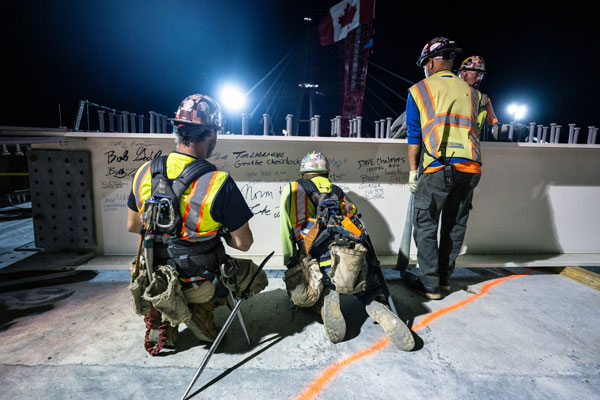
One of those workers, Jason Huggett, a second-generation Ontario ironworker, said, тАЬIt was about time we got to shake hands after seeing each other from a distance for almost two years. It was really something special. That handshake means a lot to my family, my two sons, and my father, who helped build the twin span for the Blue Water Bridge in Sarnia.тАЭ
His counterpart, Casey Whitson from Michigan, added, тАЬWe would see each other, but we were far, across the river, apart for all these months working.
тАЬTo actually get to be able to meet each other and shake hands and say hello is really cool. ItтАЩs the biggest moment in my career and I now share something with my father, who helped build the Renaissance Center in Detroit.тАЭ
Jason Roe, Local 700 business manager said, тАЬI am so proud of every member that has had a hand in building this iconic structure and made sure everyone got to go home at night to their families safe and sound.тАЭ
Over the 18 months of construction the bridge rose to 46 metres over the Detroit River, allowing freighters to pass below on the busy Great Lakes commercial waterway.
But the bridge project is far from complete before opening in fall 2025.
Crews must re-stress stay cables and install electrical, fire suppression and drainage systems, barriers, signage, lighting, deck paving, pavement markings and a multiuse path that will allow pedestrians and cyclists to also cross.


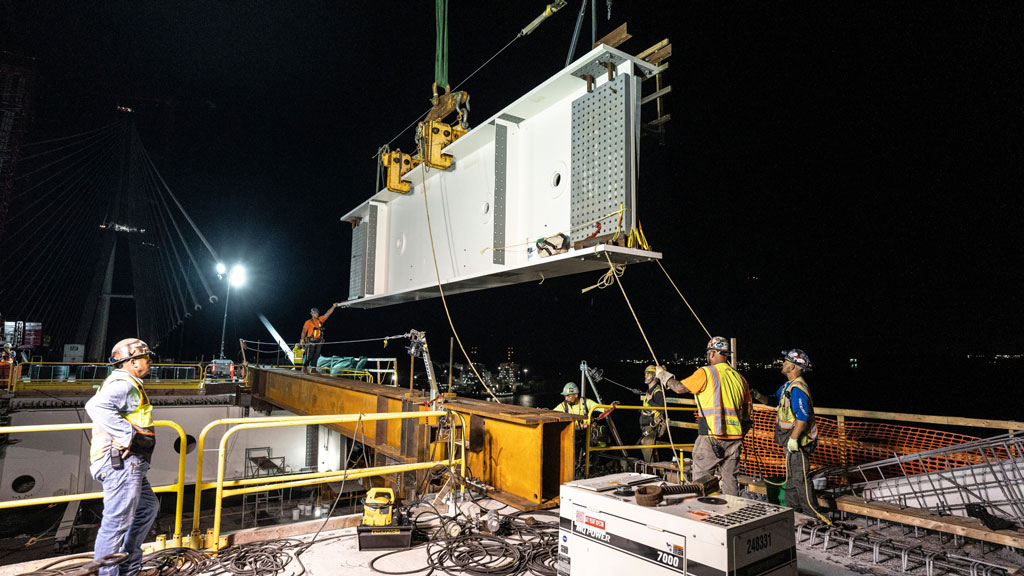



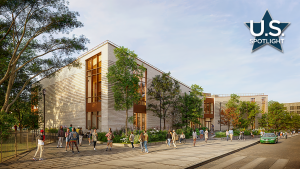
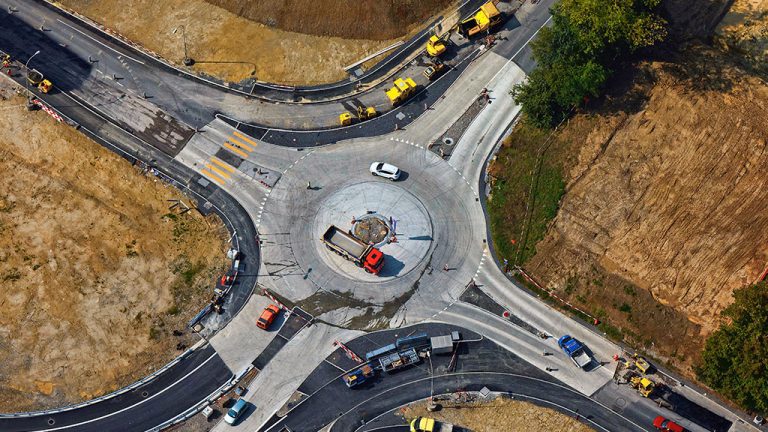

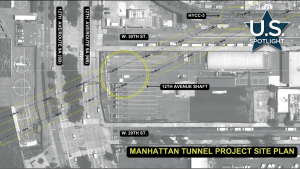

Recent Comments
comments for this post are closed